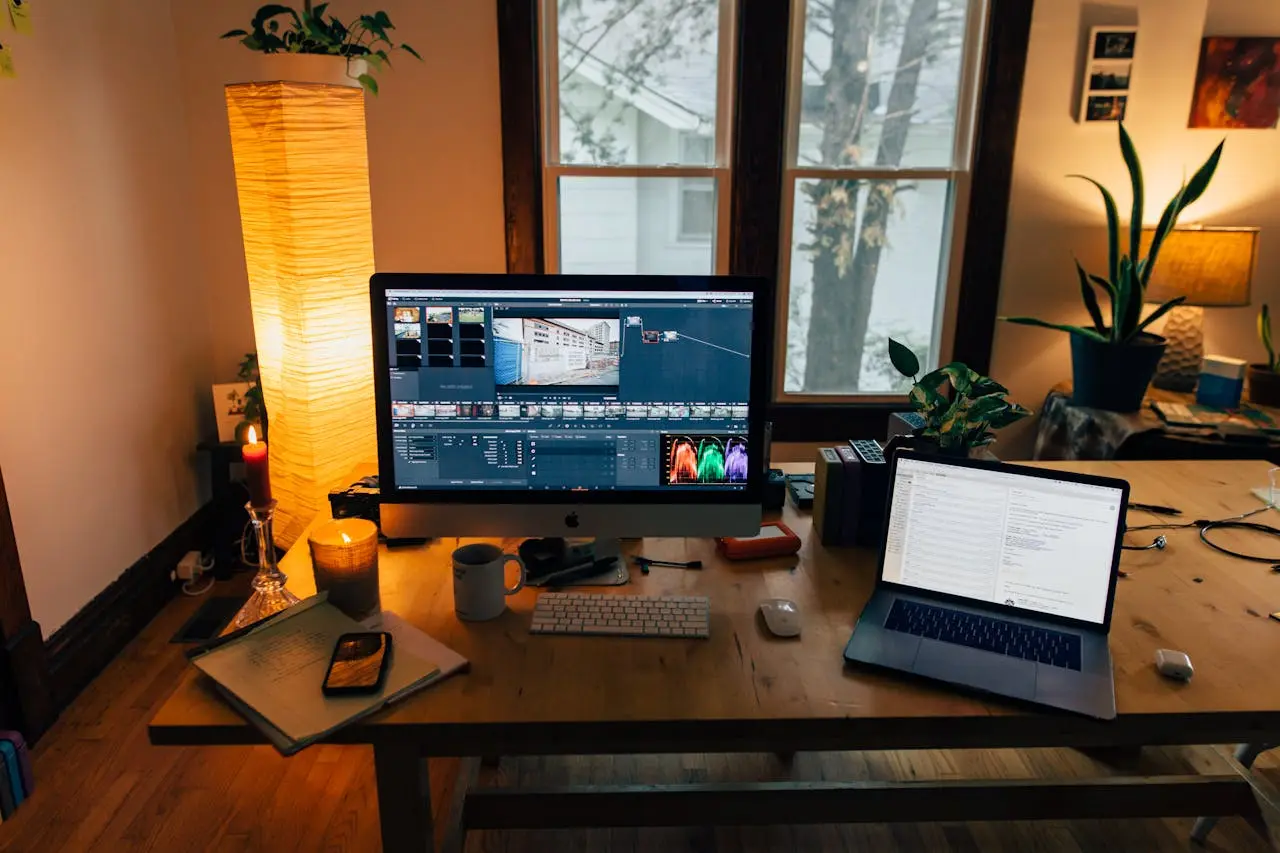Video editing is an essential skill in today’s digital world, whether you’re a content creator, filmmaker, or just someone who wants to enhance their personal videos. This guide will walk you through setting up an efficient video editing workflow, from choosing the right tools to organizing your projects.
Tools Required
- Computer (desktop or laptop)
- Video editing software
- External hard drive (optional but recommended)
- Headphones
- Mouse (preferably with programmable buttons)
System Requirements
The system requirements can vary depending on the complexity of your projects and the software you choose. However, here are some general guidelines:
- Processor: Intel Core i5/i7 or AMD Ryzen 5/7 (7th gen or newer)
- RAM: 16GB minimum, 32GB recommended
- Storage: SSD with at least 256GB free space
- Graphics: Dedicated GPU with 4GB VRAM or more
- Display: 1080p resolution or higher, color-accurate if possible
[Hint: Insert an infographic showing recommended system specs here]
Learning Difficulty
Learning video editing can range from easy to challenging, depending on your goals:
- Basic cutting and assembly: Easy
- Adding transitions and simple effects: Moderate
- Color grading and advanced effects: Challenging
- Mastering professional software: Time-consuming but achievable with practice
Step-by-Step Workflow Setup
1. Choose Your Video Editing Software
Select a video editing software that suits your needs and skill level. Some popular options include:
- Beginner-friendly: iMovie (Mac), OpenShot (free, cross-platform)
- Intermediate: Adobe Premiere Elements, DaVinci Resolve (free version)
- Professional: Adobe Premiere Pro, Final Cut Pro X (Mac), DaVinci Resolve Studio
For a beginner’s guide to choosing video editing software, check out this helpful YouTube video:
2. Set Up Your Workspace
Create a comfortable and ergonomic workspace:
- Position your monitor at eye level
- Use a comfortable chair with good back support
- Ensure proper lighting to reduce eye strain

3. Organize Your Files
Develop a consistent file organization system:
- Create a main “Projects” folder
- Inside, create subfolders for each project
- Within each project folder, create folders for:
- Raw footage
- Audio files
- Graphics and assets
- Exports
Example folder structure:
Projects/
├── Project1/
│ ├── Raw Footage/
│ ├── Audio/
│ ├── Graphics/
│ └── Exports/
├── Project2/
│ ├── Raw Footage/
│ ├── Audio/
│ ├── Graphics/
│ └── Exports/4. Import and Organize Your Footage
- Import your footage into your editing software
- Create bins or folders within your project to organize clips
- Rename clips with descriptive names for easy identification
For tips on organizing your footage in Premiere Pro, watch this tutorial: How to Organize Footage in Adobe Premiere Pro
5. Set Up Your Timeline
- Create a new sequence with the appropriate settings for your project
- Arrange your clips on the timeline in a rough order
- Use markers to identify key points or sections in your video
6. Edit Your Video
- Trim your clips to remove unwanted sections
- Arrange your clips in the desired order
- Add transitions between clips (when necessary)
- Insert text, graphics, or lower thirds as needed
For a comprehensive guide on basic video editing techniques, check out this video:
7. Add Audio
- Add background music, sound effects, or voiceovers
- Adjust audio levels to ensure clear and balanced sound
- Use audio transitions to smooth out sound changes
8. Color Correction and Grading
- Apply basic color correction to ensure consistent exposure and white balance
- Add color grading to achieve your desired look and mood
For an introduction to color grading, watch this tutorial:
9. Add Effects and Graphics
- Insert any necessary visual effects or motion graphics
- Ensure effects enhance rather than distract from your story
10. Review and Refine
- Watch your entire video multiple times
- Make any necessary adjustments to timing, pacing, or effects
- Get feedback from others if possible
11. Export Your Video
- Choose the appropriate export settings based on your intended platform (e.g., YouTube, Vimeo, social media)
- Select the desired format, resolution, and bitrate
- Export your video
For guidance on export settings, check out this video
Our Thoughts
Setting up an efficient video editing workflow takes time and practice, but it will significantly improve your productivity and the quality of your work. Remember to continuously refine your process and stay updated with new techniques and software features.
Happy editing!





